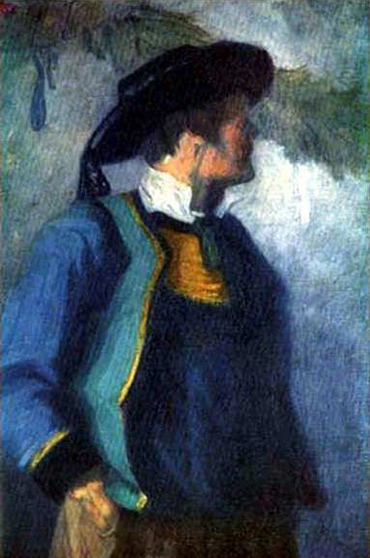Franz Marc is an interesting artist and his Self Portrait tells part of his story. His life was cut off early in 1916 by World War 1 but by the age of 36 Marc had made a major contribution to the landscape of art.
From an early age, Marc was surrounded by art. His father was a renowned landscape artist. His grandparents had been keen amateur artists. It is little surprise then that Marc found himself attending the Faculty of Arts in Munich by the age of 20.
At University, he studied under the tutelage of Gabriel Hackl and Wilhelm Von Diez. At that time, this meant painting in keeping with their naturalism style. It also meant being studio bound.
Marc's portrait of his mother is a good example of his painting during this period. But, in 1903 Marc took his first visit to Paris and his later paintings show a marked change to his work.
The Self Portrait Marc worked on in 1905 shows his new impressionist leanings. In Breton costume, Marc pays homage to this time. There is good chance that Marc would have visited the artistic colony of Pont-Aven. We know this was a favoured place of one of his many artistic influences, Paul Gauguin.
There is a great deal more movement in this his Self Portrait than his earlier work of his mother. The two paintings show Marc's growth as an artist. The earlier work shows a restraint on the use of colour. Whereas the Self Portrait brings alive the blue palette. He uses it both in the costume he is wearing and the background.
There is also a stark difference in the composition of the two paintings. In his earlier 1902 work, his mother sits in her chair reading a book. There is a care to detail. It depicts the life of an ordinary woman. But in his Self Portrait, the lines between himself and his background begin to almost merge.
The Self Portrait uses small, thin, yet visible brush strokes. There is a strong sense of light being an important part of the painting. This, with the more open expression of colour, shows Marc's transition from naturalism to impressionism.
In the painting, Marc's appears to be standing at ease. But there is a feeling that he could be about to take off and walk away. Possibly, this was his symbolic message, as his style is in flow and he has moved his face away from his earlier teachings.




